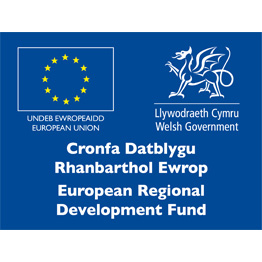Evolving the Research Capacity into Wear Resistant Multicomponent Alloys – Microstructure Approach
Founded in 1990, Weartech International Ltd. has a major plant in Port Talbot where they manufacture wear resistant, hard-facing cobalt-, nickel, and iron-based alloy consumables and components. Weartech alloys are available in the form of bare rods, stick electrodes and small diameter wires that are manufactured through a continuous casting process, whilst wear-resistant cast components are made by centrifugal and sand casting methods.
It is expected that through engagement and collaboration with ASTUTE 2020, Weartech’s advanced manufacturing knowledge will increase, alongside certain improvements, be applied more widely to production, providing additional gains for Weartech.
The collaborative project will cover products that are sold across multiple sectors. e.g. steel industry, oil and gas, timber, mining, medical etc.
Challenges
The proposed research project will examine the microscopic structure and mechanical properties of these multicomponent alloys when produced by continuous casting (for rods), sand casting and centrifugal casting (for components).
These investigations will be supported by computational modelling of the heat and fluid flow during casting (including the effects of phase transformations during solidification).
Additionally, the reverts recycling process in casting will be investigated to determine the level beyond which product quality will be affected, allowing for a sustainable manufacturing process that impacts minimally on the environment.
Solution
Computational Engineering Modelling and Advanced Materials Technology are the main areas of expertise that the ASTUTE 2020 team brings to this project. The research involves chemical and microstructural analyses of various fluidity chemical sensitivity, and reduction of slag formation taken at different stages of the process, and relating the effects observed in terms of oxidation, colour changes and brittleness to the process conditions. This will be supported by the coupled thermal and flow numerical simulations of the continuous, centrifugal and sand casting processes using available software.
Moreover, the collaboration between ASTUTE 2020 and Weartech will provide supplementary knowledge transfer on the slag formation, flux function and fluidity chemical sensitivity that will enable Weartech to develop and build research capacity into wear resistant multicomponent alloys to advance manufacturing knowledge whilst reducing waste and enhance material sustainability.
This will lead to a more efficient manufacturing process and meet increased market demand for these complex, high-value alloys.
Impact
One of the aims of the proposed collaborative project is to gain a better understanding of porosity and oxidisation control, which can directly lead to reducing scrappage rates.
As part of this project, Weartech has invested in a new MagMelt furnace for the casting process. This investment will enable the project teams to investigate ways to address the slag formation as well as contribute to improved extraction, reduction in air pollution by the generated fume, and simultaneously reducing oxidation of the melt.
Furthermore, this reduction in scrapped components will aid in the reduction of energy used and associated costs for reworking.
Cutting direct manufacturing costs will allow more profitable manufacturing at the factory, increase competitiveness in the market, and thus help increase Weartech International’s turnover by up to 30%, not only through a more streamlined process but also through a reputation for high quality and consistent products.
Weartech employs approximately 10 people per £1M turnover, and the expectation is to increase the workforce at Port Talbot with additional operators and technical staff as a result of the collaboration with ASTUTE 2020.

